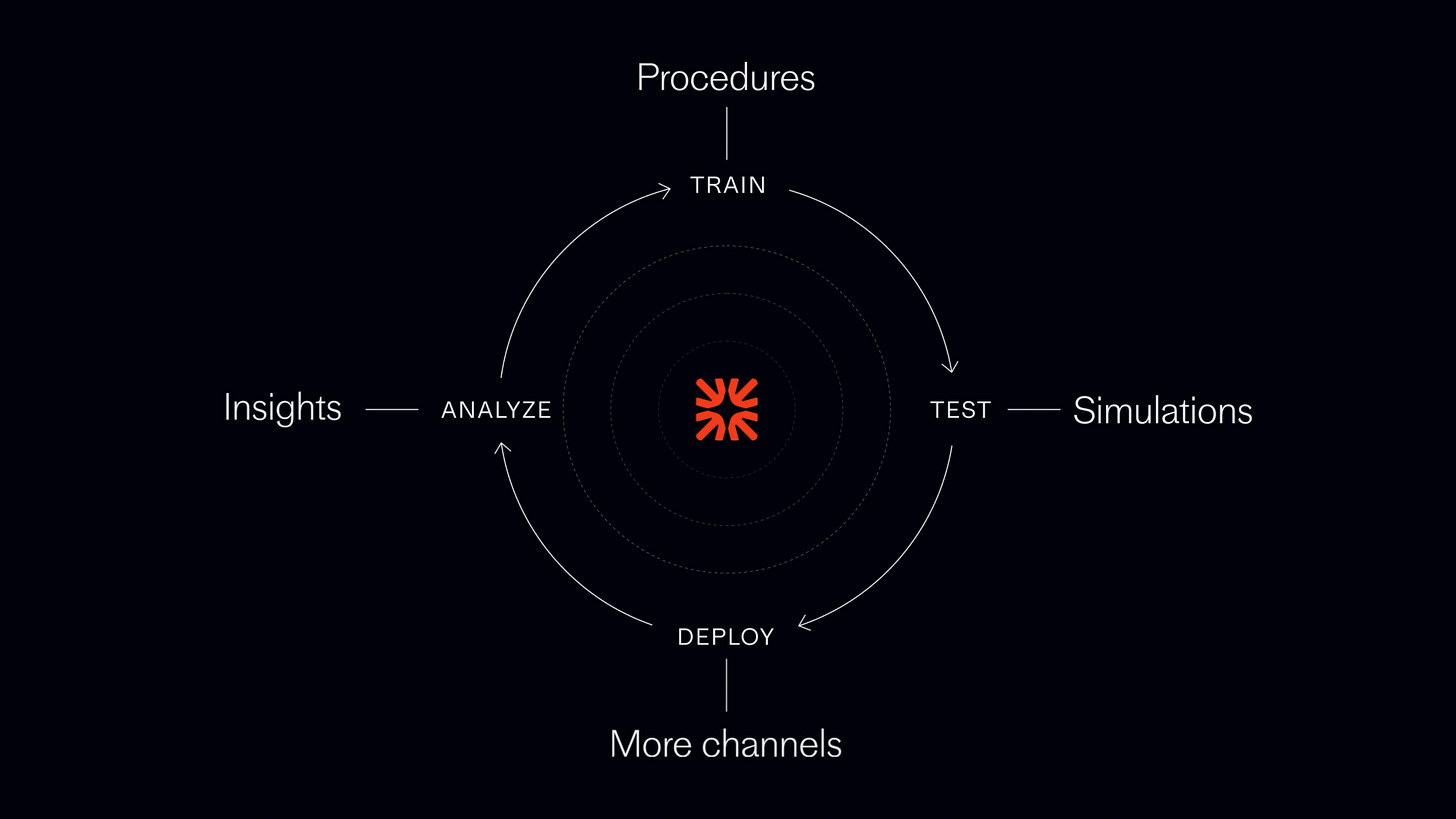Last week, Des wrote about AI as a deeply convergent force. He argued it’s reversing the last 20 years of software unbundling—that boatload of apps we all ended up with—and that the people who adapt first will have a massive opportunity.
On the ground, we see that adaptation happening in real time. A new path is being carved out, and one team is already on it: customer support.
Over the past year and change, when the rest of the business world was still debating whether to AI or not to AI, customer support became the first, undeniable, at-scale product-market fit for LLMs. This put them at the absolute epicenter of applied AI in a company. They are the first adapters, and they have more hands-on experience with this transition than anyone.
You won’t see this in all teams, of course—or not in teams who just dabble. Some leaders might implement a “Cope-pilot” to help their agents write faster, see a small efficiency gain, and call it a day. That’s just augmentation and it’s not going to get you all the way to true autonomy — or influence.
Taking this path requires a new mindset, and it leads to a simple, practical conclusion:
Your support team is your new AI product team. Your support manager is your new AI product manager.
Not just a fancy title change
The job of customer support has fundamentally changed. The past was about managing humans and tickets. The future is about building and optimizing agents.
For the customer support teams using Fin, we see this happening right now, everywhere. The daily tasks of managing a modern AI agent like Fin — Train, Test, Deploy, Analyse— are all basically what a product manager does today.
The features we announced for Fin 3 makes this even more obvious and visible. We call this the Fin Flywheel, but it’s the same process for any support team deeply using a frontier AI agent:
If your support team trains Fin with new knowledge and builds Procedures, their role expands from writing help articles into defining product capabilities and designing complex business logic.
When they use Simulations to vet a new procedure, they are running a full QA and UAT cycle before it reaches a single customer.
When they use Insights to see where Fin is failing or handing off, they are doing product analytics to find failure points and identify the next feature to build.
And when a support lead pushes a change to a Procedure, they are shipping a product update that immediately impacts the customer experience across channels.
By continually improving the performance of AI as a system, support teams are acting as product managers—so that the scope of the CS job now mirrors that of a PM.
Coding in English
They are, in effect, programming. English is now the programming language. But make no mistake, it is still programming. It’s deceptive because it looks easy, but this is how you get the AI to do “the hard stuff” —the complex, multi-step actions and personalised queries that eat up all your team’s time, not just the more straightforward informational ones.
This new role also demands new metrics. The old world of support was obsessed with human-based metrics like First Response Time and Average Handle Time. In a world with an AI agent, those metrics are meaningless.
The new metrics that matter are Resolution Rate and Involvement Rate. We tell our customers: Resolution Rate is Fin’s performance, but Automation Rate (Resolution Rate x Involvement Rate) is your org’s performance. This single metric tells you how much of the total work your system is handling. The new product manager’s job is to drive that number up.
Our own playbook
This is a practical reality we’ve seen at home, because the Intercom support team through this transformation. They embraced their new role as software builders. They hired a second Knowledge Manager and a Conversation Designer. They reviewed AI suggestions weekly, implemented and iterated on 28 new pieces of Guidance, and built 8 new Fin Tasks for complex issues.
The result of all this “product” work: In six months, their Resolution Rate jumped from 65% to 82%, and their Involvement Rate hit 93%. That’s what happens when you stop managing tickets and start managing the system.
This is how you “broaden the mandate,” as Des put it. It’s the definitive answer to the question that comes up anytime we talk about AI and the economics of work:
What do we do with all the time Fin gives back?
What happens is that time saved creates the budget that funds this product work. Your support team reinvests its own efficiency gains directly back into making the AI smarter, faster, and more capable.
AI’s gravitational pull
For companies with truly high-volume support—the big B2C names you’ve heard of—it’s not uncommon to already have dedicated product teams or PMs building CX solutions specifically for their support functions. We believe this dynamic is about to expand dramatically across the board. Support teams will increasingly take on the product-building mandate as this capability becomes more and more essential. For teams without a dedicated partner product team, support leaders will increasingly fill this gap themselves.
This is a chance to align your org chart with this new reality. Your support team is already doing this job: it’s time to make it official. They are evolving into the product engine for your most important customer-facing AI.
And that’s the real opportunity here. Your support team can become the beacon of AI transformation for your entire company. Support used to be on the side, but now other teams are coming to AI to figure out how things work.
So go and give them the ownership and the tools to do it.



